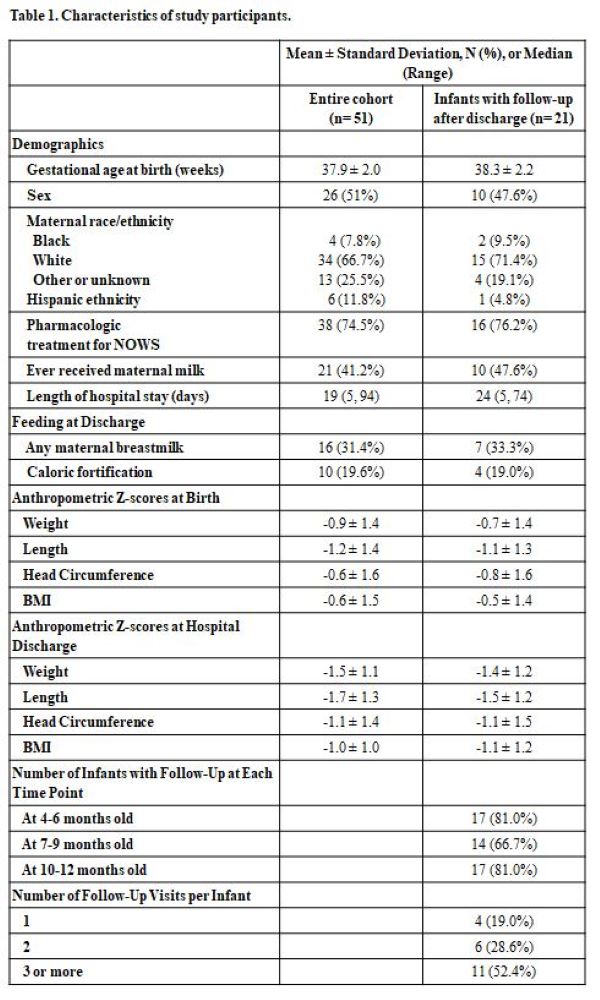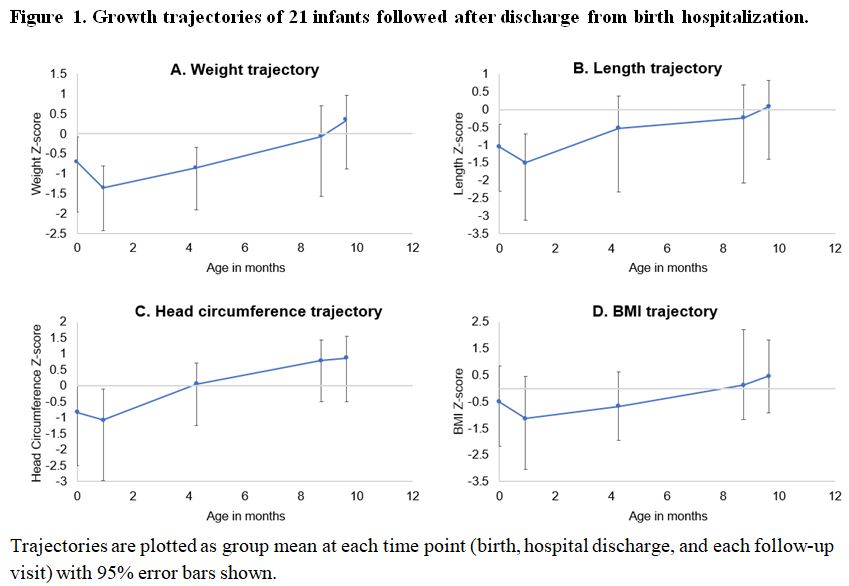Neonatal Follow-up
NICU Follow Up and Neurodevelopmental 2: Neonatal Growth, Nutrition and the Brain
211 - Growth and Body Proportionality among Infants with In Utero Opioid Exposure
Publication Number: 211.144
.jpg)
Kathryn Dee L. MacMillan, MD, MPH
Instructor in Pediatrics
Brigham and Women's Hospital
Boston, Massachusetts, United States
Presenting Author(s)
Background:
Newborns exposed to opioids in utero are at risk for neonatal opioid withdrawal syndrome (NOWS), which can cause poor feeding, excessive stooling and increased metabolic demand resulting in poor growth. NOWS has been associated with poor weight gain during the neonatal hospitalization, yet little is known about growth patterns of these infants after discharge. Furthermore, little is known about trajectories of linear growth and body proportionality (as defined by body mass index, BMI) in this population.
Objective:
To examine weight, length, head circumference (HC), and BMI trajectories from birth to one year old among newborns exposed to opioids in utero.
Design/Methods: In this retrospective chart review, we included all infants ≥35 weeks gestation born in our academic medical center from Jan 2017-Jun 2021 who had in utero exposure to opioids (based on diagnosis codes in the electronic medical record). We recorded infant demographics and weight, length, and HC at birth, hospital discharge, and at follow-up visits at about 4, 8, and 12 months old. We determined Z-scores using the World Health Organization growth standards. We plotted growth trajectories over time using group means. We used a linear mixed model to model mean growth trajectory from hospital discharge to one year old and tested the significance of interaction terms to determine if demographic factors (e.g. sex) impacted growth trajectories.
Results: We studied 51 infants, mean gestational age 37.9 ± 2.0 weeks, 51% male (Table 1). Twenty-one infants had growth data after discharge. Mean Z-scores for weight, length, HC and BMI were below zero at birth and declined at hospital discharge, but increased steadily between discharge and 1 year old (Figure 1). There were no differences in growth trajectories when stratified by sex, pharmacologic treatment of NOWS or not, and type of feeding at discharge (any breastmilk versus none).
Conclusion(s):
Infants with in utero opioid exposure exhibited poor growth during neonatal hospitalization, but all anthropometric growth parameters improved over the first year of life after hospital discharge. These findings may reflect the positive effect of post-discharge services including feeding/nutrition supports. However, rapid growth velocity in infancy may adversely impact later health, including obesity and cardiometabolic risk; it is possible early caloric and volume supplementation continue past the point of increased metabolic demand. Future research should further characterize feeding and growth patterns to guide longitudinal nutritional recommendations in this population. 

